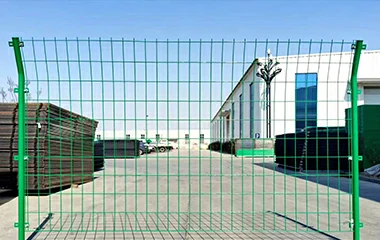 TEL:
+86-13102802206
TEL:
+86-13102802206
 Email:
fencenetting@china.com
Email:
fencenetting@china.com
 Language
Language
 TEL:
+86-13102802206
TEL:
+86-13102802206
 Email:
fencenetting@china.com
Email:
fencenetting@china.com
 Language
Language


The Elegance and Functionality of Interior Gabion Walls
In the realm of interior design, innovation is key to creating spaces that are not only aesthetically pleasing but also functional. One such innovative design element that has gained popularity in recent years is the interior gabion wall. Derived from the term gabion, which refers to a wire cage filled with rock or other materials, these walls bring a unique blend of texture, sturdiness, and environmental consciousness to interior spaces.
What is a Gabion Wall?
Traditionally used in civil engineering to control erosion and support structures, gabion walls are now making their way into residential and commercial interiors. An interior gabion wall typically consists of a framework made of wire mesh, filled with stones, pebbles, or even recycled materials. This design creates a visually striking feature that can serve multiple purposes acting as a room divider, a decorative feature, or even a functional piece of furniture.
Aesthetic Appeal
One of the most significant advantages of gabion walls is their aesthetic versatility. The texture of the stones combined with the industrial edge of the metal mesh creates a stunning contrast, making it a focal point in any room. Designers can choose from an array of stones, colors, and sizes to match the interior decor style, whether it’s contemporary, rustic, or minimalist.
Moreover, gabion walls can serve as an artistic canvas. Designers can incorporate various materials into the gabions, such as glass, wood, or metal, to create unique designs that capture the homeowner's personality. A well-designed gabion wall can elevate a space, adding depth and character.
Functional Benefits
Beyond their visual appeal, interior gabion walls are highly functional. Their solidity makes them ideal for creating defined spaces within open floor plans. For instance, they can separate living areas from dining spaces without the need for traditional drywall, contributing to a more open and airy feel while providing privacy where needed.

Additionally, gabion walls can be designed to serve as storage solutions. For example, they can incorporate shelving for books, plants, or decorative items, efficiently using vertical space. This dual functionality enhances the usability of a room, making it a sensible choice for smaller spaces or multifunctional areas.
Environmental Considerations
With the increasing emphasis on sustainable building practices, gabion walls stand out as an environmentally friendly option. The materials used in the construction of gabion walls can often be sourced locally, reducing the carbon footprint associated with transportation. Moreover, because they are made from natural elements, gabions can blend into the surrounding environment and promote a connection with nature.
Using recycled materials in the filling of gabion walls also contributes to sustainability. By repurposing discarded stones or construction debris, homeowners can make a positive environmental impact while enjoying a unique design element in their home.
Installation and Maintenance
Installing an interior gabion wall requires careful planning and consideration. While they can be constructed by skilled DIY enthusiasts, hiring a professional can ensure that the wall is secure and meets safety standards. The process typically involves selecting the right materials, creating a sturdy frame, and filling it with the chosen stones or materials.
Maintenance of gabion walls is minimal. They are resistant to moisture and pests, making them a durable choice for indoor environments. Regular cleaning to remove dust and debris is typically all that’s necessary to keep them looking their best.
Conclusion
Incorporating interior gabion walls into a home or commercial space is an exciting way to combine functionality with striking design. Their unique aesthetic appeal, practical benefits, and eco-friendly attributes make them a standout choice for modern interiors. As the trend of using natural materials and sustainable practices continues to rise, gabion walls are proving to be a timeless addition that not only enhances interior spaces but also resonates with environmental consciousness. Embracing this design element can lead to the creation of not just walls, but works of art that define a space.